Lessons from the Great East Japan Earthquake
How international aid, community spirit and hard work combined to overcome adversity
On 11th March 2011, Japan was rocked by the Great East Japan Earthquake and the devastating tsunami that was caused as a result. Nearly 20,000 people were killed and hundreds of thousands displaced. Since then, the region has been striving to recover with the help of countries around the world. A decade on, the success of the rebuilding process has shown how international aid, community spirit and hard work can overcome adversity.
Here we profile two unique companies which exemplify Japan’s reconstruction and ask those involved about the insights they have gained.
Case study 1: The Sanriku Railway – the lifeline the world rallied around

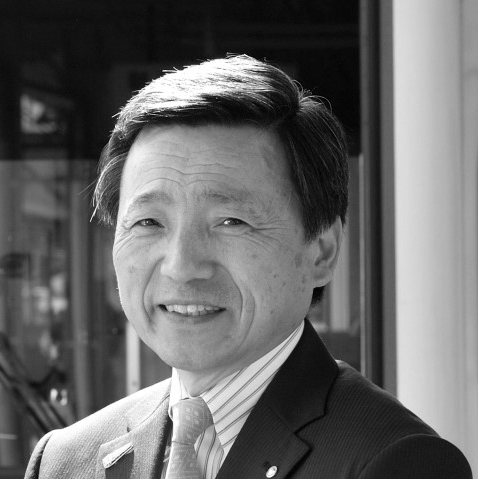 NAKAMURA Ichiro, president of the Sanriku Railway, on how the world helped get a community back on track
NAKAMURA Ichiro, president of the Sanriku Railway, on how the world helped get a community back on track
Founded in 1984, the Sanriku Railway covers the majority of the coastline of Iwate prefecture in northern Japan. Its trains provide vital connectivity to the picturesque region, bringing together rural communities and larger cities while taking passengers through some of Japan’s most stunning scenery. But in 2011 the railway lay in ruins.
The earthquake and tsunami caused damage at over 300 locations on the route; station buildings had been destroyed and bridges had collapsed. In total over five kilometers of track had been washed away. “The damage was extreme and extensive,” remembers Nakamura. “The railway was the region’s main means of public transportation. Immediately after the disaster, many local people began asking when the railway would run again.”
We were able to resume some services five days after the disaster, an unbelievable achievement
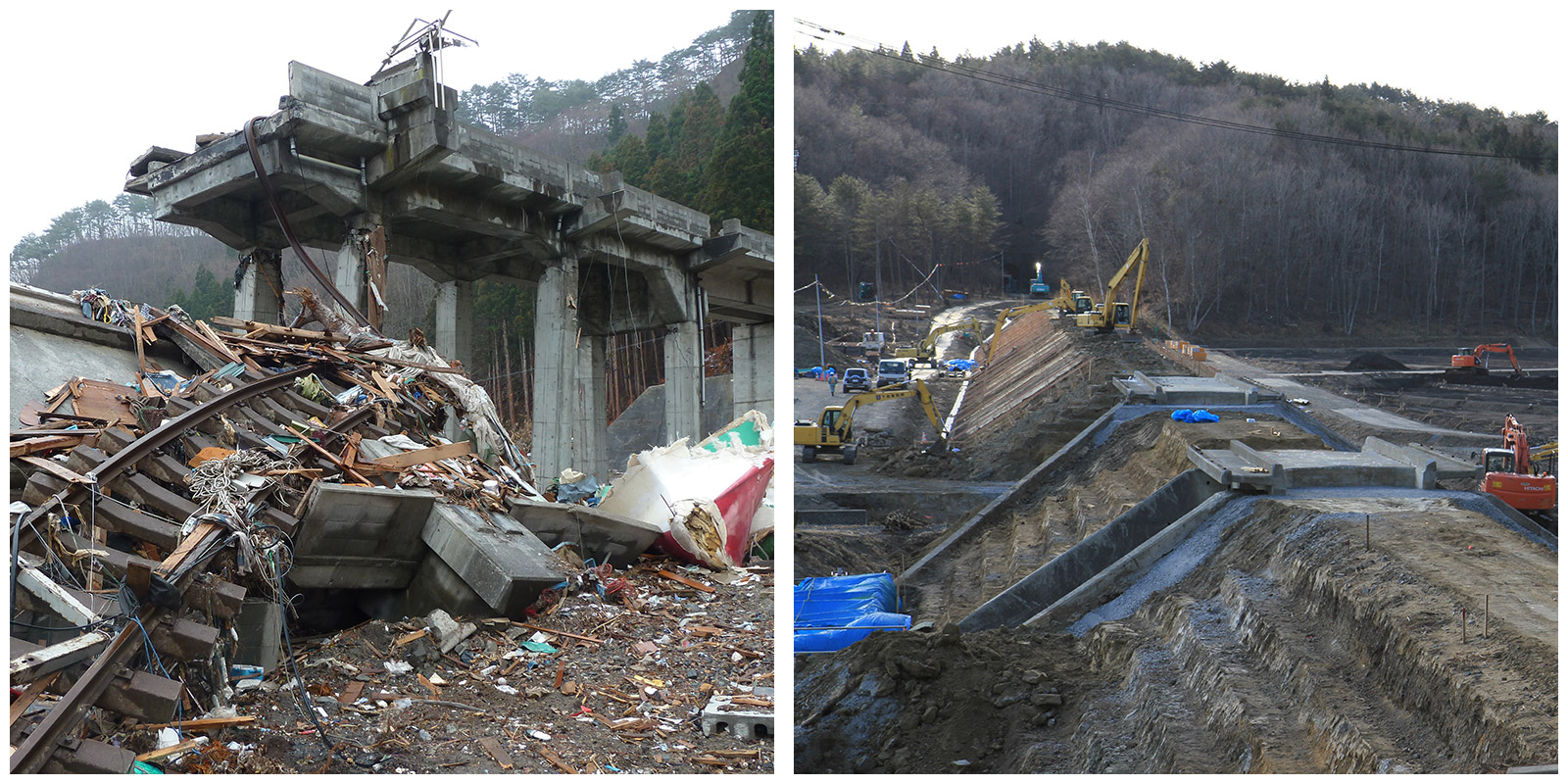
With so many people depending on them, the company put together a plan to quickly get the railway back in business. "There were many aftershocks, and since the roads along the coast were destroyed by the tsunami, cars couldn’t be used. People walking along our tracks were a common sight and under such circumstances, we started preparations and inspections for resumption,” says Nakamura. “Even though it usually takes at least two weeks just for inspections, we were able to resume some services five days after the disaster, an unbelievable achievement. Thanks to the support of many people both in Japan and overseas, three years after the disaster we reopened all the lines.”
The biggest challenge the company faced was securing the financial resources required for restoration, which exceeded ¥10 billion ($95m). The Japanese government provided most of the funding but support also came from overseas, particularly a Gulf country located over 8,000 kilometers away. “After the Great East Japan Earthquake, the Kuwaiti government offered to give the Japanese government five million barrels of crude oil,” explains Nakamura.
Many people say that the Sanriku Railway is a symbol of the region's recovery
“The government converted the crude oil into cash and distributed the money to the disaster-affected prefectures. We used the support fund from Kuwait to buy eight new train cars and rebuild the station buildings. Kuwait's support was an essential part for the restoration and resumption of Sanriku Railway's operations.” As a mark of gratitude, the company’s new trains bear the Kuwaiti coat of arms on their front, along with the message ‘We greatly appreciate the support from the State of Kuwait’ proudly written on the doors in Arabic, Japanese, and English.
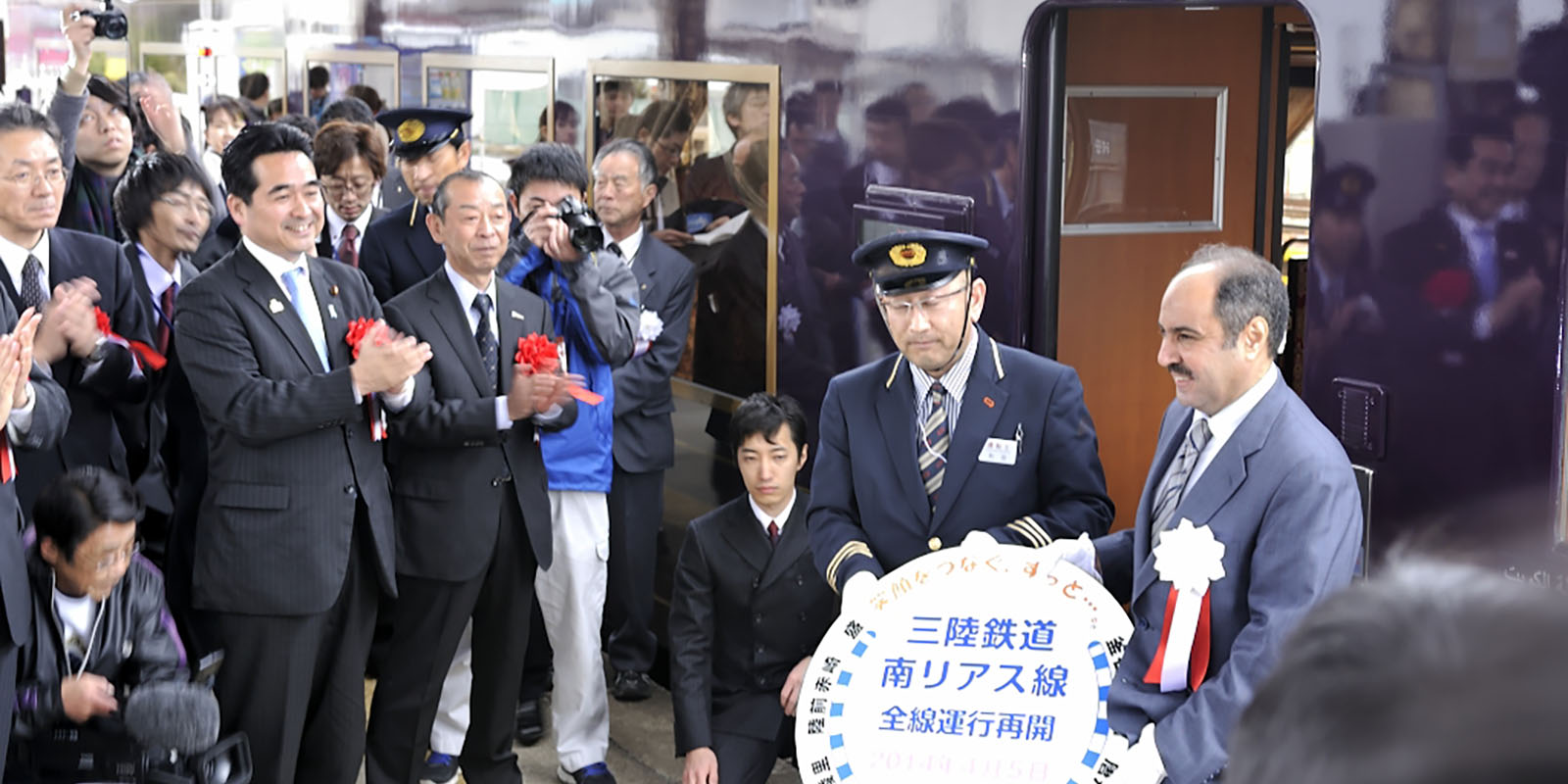
Used by locals to get to hospitals, shops and workplaces, the railway’s reopening was essential to the area’s recovery. It also enabled the return of visitors from both Japan and abroad to an area that depends on tourism. “Many people say that the Sanriku Railway is a symbol of the region's recovery,” says Nakamura. “Sanriku Railway employees have worked hard these past ten years. I would like to express my gratitude again to everyone who has helped support us.”
I hope once the pandemic is over, people from all over the world will come again and use our railway as soon as possible
The start of 2021 is a very tough time for everyone because of the ongoing pandemic, but with the tenth anniversary of the disaster approaching, Nakamura hopes to express his gratitude for the kindness that has been shown to the region. In March, Sanriku Railway will operate a special train – a testimony to the area’s appreciation of Kuwait’s support. It will have an exhibition of photographs of the restoration work, and a commemorative plate thanking Kuwait at the front of the train. On 11th March another special service will run to show the company’s gratitude for all the assistance Sanriku Railway has received. It will travel the entire 163 kilometers of the restored route with employees on board talking about the disaster from ten years ago and the recovery.
Nakamura hopes that people from around the world will soon once again be traveling through Iwate’s and Sanriku’s stunning scenery by rail, and the company plans to offer special seasonal trains which will see tourists get off at stops along the route to enjoy the wonderful local seafood and experience the regions’ culture. “You can enjoy both delicious flavors and fantastic sights,” he says, brimming with enthusiasm. “I hope once the pandemic is over, people from all over the world will come again and use our railway as soon as possible… We want to continue providing enjoyable rides for our passengers.”
Case study 2: Kanda Package – Innovation out of adversity

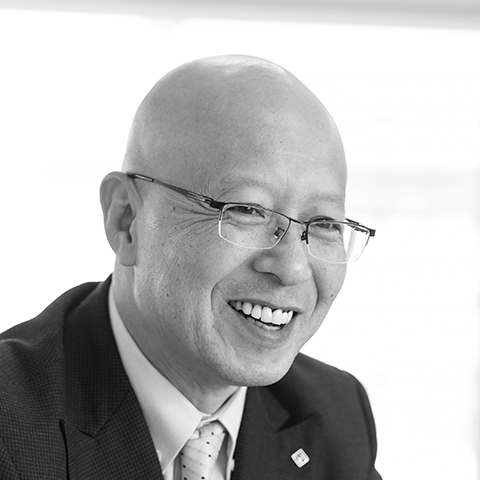 KANDA Masahiko, president of Kanda Package, on how cardboard came to the rescue
KANDA Masahiko, president of Kanda Package, on how cardboard came to the rescue
When the Great East Japan Earthquake struck, Kanda – president of the cardboard manufacturer that bears his name – knew he had to help. The company’s headquarters are in Sukagawa, Fukushima prefecture, one of the areas impacted by the events of 11th March 2011, and in the immediate aftermath Kanda visited a makeshift shelter set up in a gymnasium to provide support to the evacuees. He was shocked by what he saw. "It was completely inadequate,” he says. “There was no private space and it was so cluttered it was hard to know what was where. We began by bringing cardboard to the shelter since it was cold. The evacuees laid the cardboard on the floor for warmth, but also used it for partitions that allowed for some privacy.”
People who needed to be taken to hospitals were stranded at that time because roads were blocked
Having witnessed the difference cardboard can make, Kanda and his team began quickly adapting the material to help the evacuees. “People who needed to be taken to hospitals were stranded at that time because roads were blocked,” he explains. “We thought we could make medical treatment rooms on site which were sturdy but could be set up quickly."
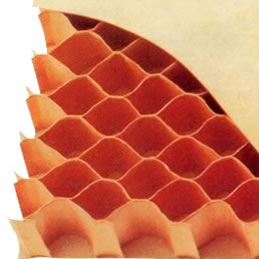
The result was a unique “panel assembly ER” – a pop-up emergency room made up of interlocking cardboard segments that could be quickly assembled without any tools wherever it was needed, transforming any corner of a disaster site into a space for medical treatment. To ensure the cardboard was up to the task, the team developed a unique honeycomb system that meant the structure was sturdy yet lightweight, and added treatments to make it waterproof.
Shortly after the earthquake, 163 countries and regions provided financial, material and physical support, which greatly contributed to the reconstruction efforts
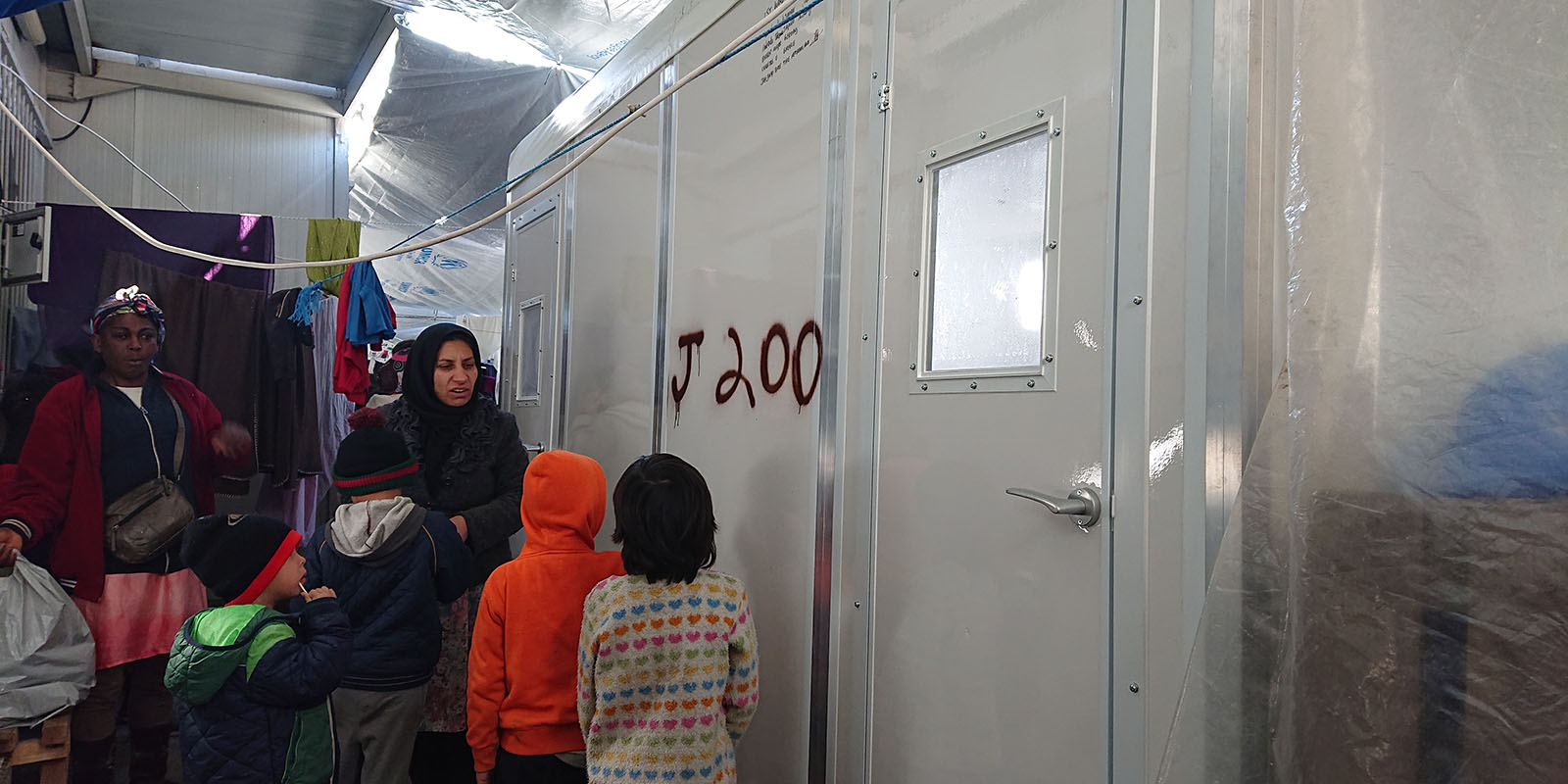
Since 2011, the company has continued to develop its cardboard ER and has seen it used across Japan: creating treatment, changing and nursing rooms after an earthquake hit Kumamoto in 2016 and allowing treatments to continue in Tani Hospital, Fukushima, after flooding from Typhoon Hagibis in 2019. The product has also been introduced overseas, including as a shelter in Greece for refugees from a number of countries. “In partnership with ISAR (International Search and Rescue) Germany, we are also conducting tests to introduce the product to international rescue sites, with multiple applications in mind including urgent medical care,” adds Kanda.
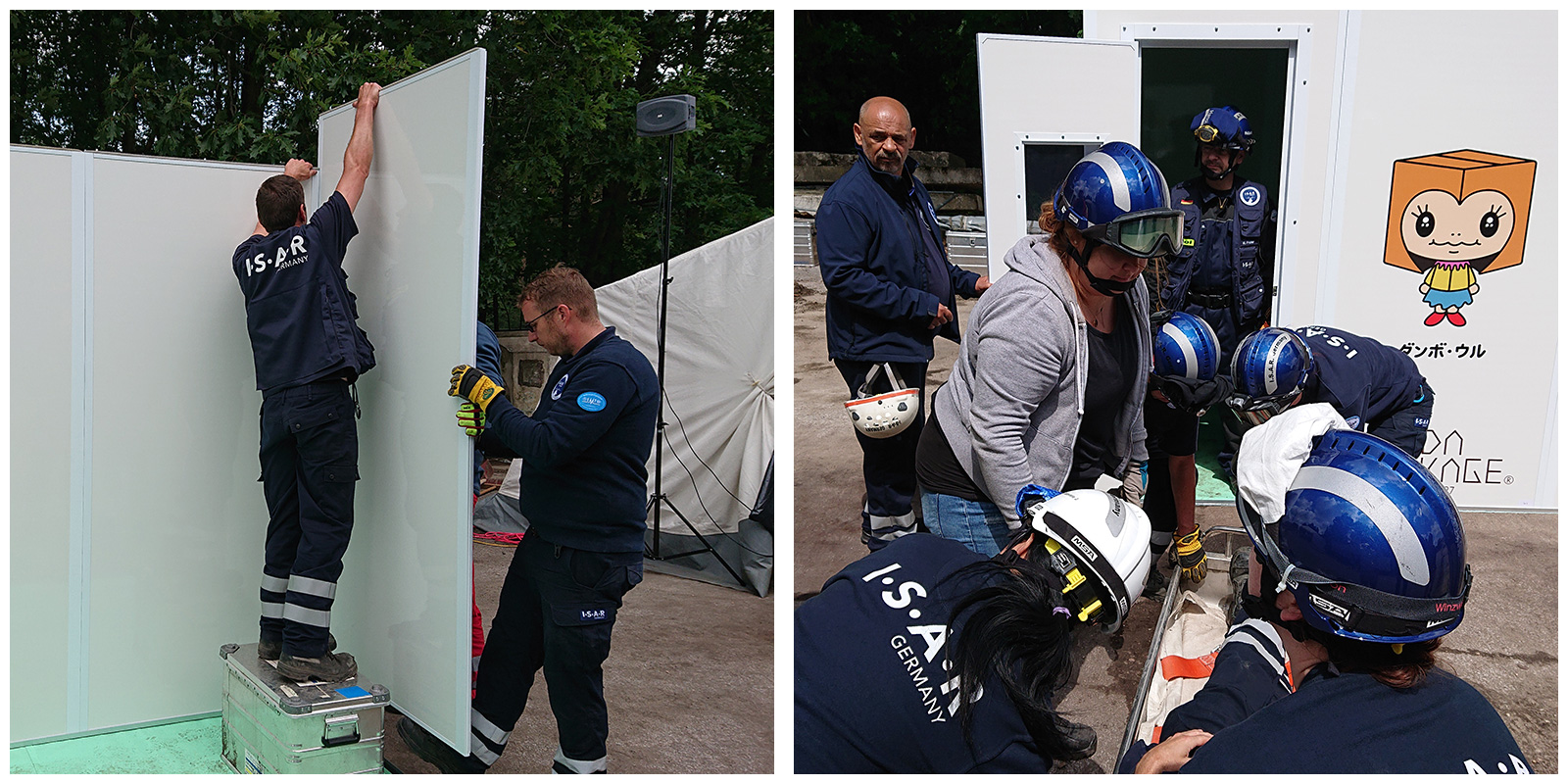
Shortly after the earthquake, 163 countries and regions provided financial, material and physical support, which greatly contributed to the reconstruction efforts. Many of these were developing countries in Asia and Africa. “During the time of the disaster, the substantial overseas support leading to the reconstruction was something constantly in my mind,” says Kanda. “There are many places abroad that need such a simplified product,” he continues. “We get the most requests from areas where medical equipment is not so readily available, such as Africa, where our products are viewed as an alternative to being treated in hospitals.”
I would like to thank all the people who supported the reconstruction and, in return, I am determined to accelerate efforts to deliver products to areas that need them
The global pandemic has again shown the need for innovative medical solutions and Kanda is working on again adapting his products. “Before the start of Covid-19, there were outbreaks of diseases like Ebola in Africa. The panel assembly ER enables treatment spaces to be set up quickly and safely,” he says. “There is a considerable need for the protection of medical personnel from secondary contamination arising from the treatment setting itself, and this product can be incinerated after use.”
All of this is proving that innovation can come out of adversity. “I think that if we hadn't had the Great East Japan Earthquake, we wouldn't have developed the ER or made international contributions,” says Kanda. “Marking the 10th year since the disaster, I would like to thank all the people again who supported the reconstruction and, in return, I am determined to accelerate efforts to deliver products to domestic areas and areas overseas that need them."